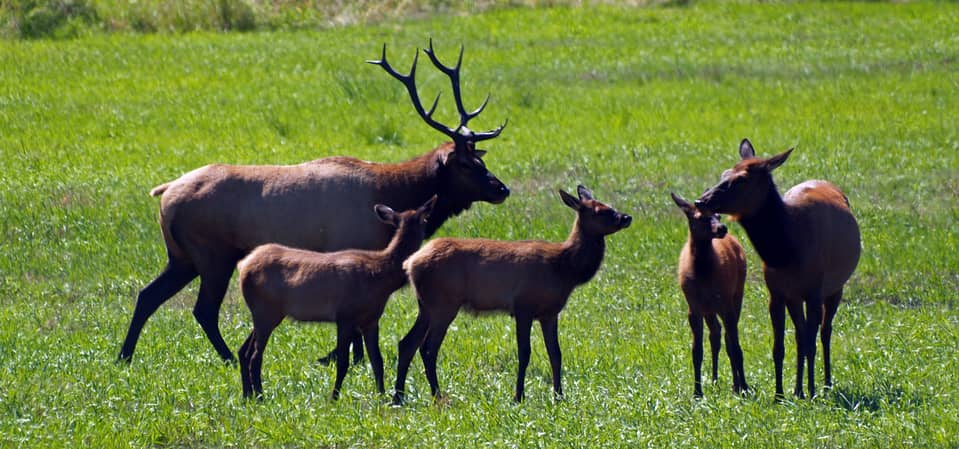The Yakima Elk Herd: 100 Years of a Hunting Legacy
OutdoorHub Reporters 02.12.13

This month the Yakima elk herd turns 100. The Rocky Mountain elk had originally arrived in Yakima, Washington in 1913, packed on several train cars. The transport was paid for by local hunters and part of a program to save the then-dying Yellowstone elk. Devastating Wyoming winters left little for the elk in Yellowstone, causing thousands of the animals to die out each year. A worried federal government decided to move the surplus elk to more viable parts of the country, and in February of 1913, 50 elk were shipped to Yakima for the total price of $600. According to the Yakima Herald, 47 survived the trip and became the basis for Yakima’s elk population.
After being kept for a short while in a local ranch, the elk were released into the wild where the animals adjusted favorably to the pristine Washington conditions. The herd grew at an alarming rate and often got into farm fields.
By the time the herd became large enough to pose a threat to the local agriculture, the county decided the elk numbers were healthy enough to hunt. Licenses were sold at $5 each in 1927. Close to 1,000 hunters applied and the season ended with nearly 200 bulls harvested. By the time the state Department of Game was established, hunting elk was a regular part of life in Yakima.
Unfortunately, the herd sometimes got a little too out of hand. During the 30s and up until the 50s, elk hounded local farmers and mowed through supplies of hay. This incited the aptly named “elk war.” Ranchers and hunters did their best to manage the elk’s skyrocketing numbers. In a desperate move, the Department of Game opened up the herd to nearly unrestricted hunting in the winter of 1939. A staggering 1,006 elk were bagged.
After every hunting season, the elk would rebound and start encroaching again onto farmland. The department often sent out patrols in jeeps near agricultural centers to ward off the animals, but it wasn’t until the early 50s that a solution was found. Carl Brady, a crop-duster pilot native to the area, came up with an ingenious solution to keep the elk at bay.
Brady had served as a civilian flight instructor for the Army Air Corps and enlisted in the ferrying service during World War II. He spent the war transporting planes for the army, and this put him in contact with an experimental craft known as the helicopter. It was a perfect match. He spent the post-war years mapping for the U.S. Geological Survey before returning home to Yakima. There he developed the idea for herding the elk in his helicopter. The idea worked so well that the Department of Game began using it regularly.
Today, Yakima boasts one of the biggest herds in Washington and draws 20,000 hunters every season. Nearly 12,000 elk roam the area and Yakima remains one of the best places in america to spot one. Not a bad legacy to leave to the next generation.
The below is a recording of Elk feeding at the Oak Creek station in nearby Naches, where the Yakima elk congregate.
httpv://youtu.be/06893QoJw4g


